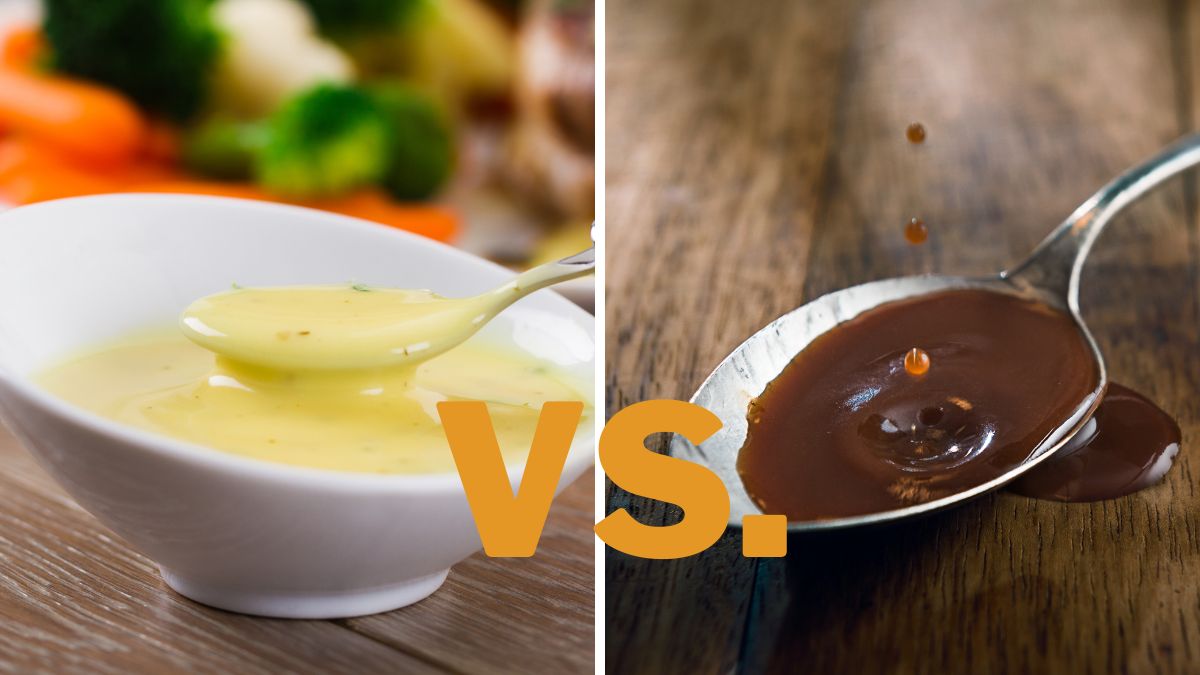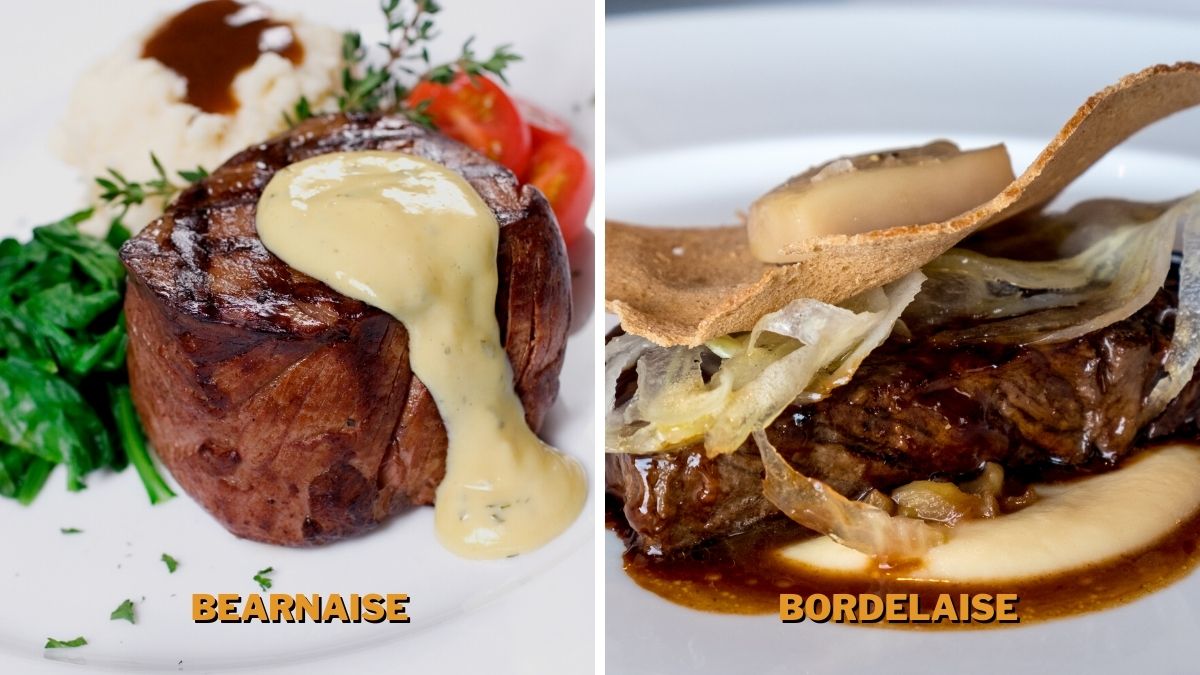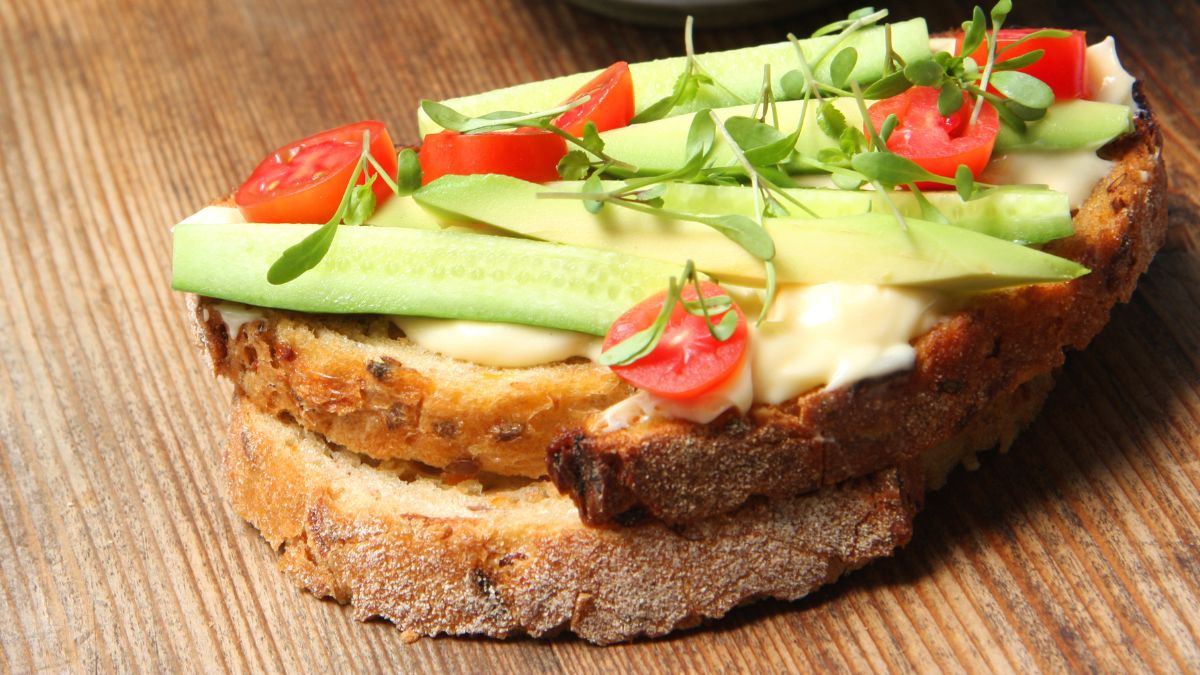Bearnaise vs. Bordelaise: Differences & Which Is Better?

If you’ve ever come across the terms ‘bearnaise’ and ‘bordelaise,’ you might have rightly assumed that both are sauces used for French cuisine. My French friend once told me that sauces are the deal-breakers — the wrong choice could tank your dish. He also emphasized that this is why it’s vital to learn as much as possible about each sauce, as improvising usually doesn’t end well. I’ve taken his advice to heart, and I’m doing just that. So this time, I wanted to learn all about the difference between bearnaise and bordelaise sauce.
Bearnaise and bordelaise contain different ingredients, which means they are different in taste and usage. What’s more, the preparation of bordelaise is slightly more complex. Both sauces are suitable for various dishes, but one will always fit better.
Bearnaise and bordelaise both have their strengths, and one sauce isn’t necessarily better than the other. All in all, only you can decide which sauce is better for you, but there are certain dishes that will match a certain sauce better. So if you want to entice your dinner guests with gourmet-level sauces that don’t take all day to make — keep reading.
Differences
The most foolproof way to learn about the differences and which of the sauces is better is to experiment and try both. This way, you’ll definitely know whether and why you prefer one over the other. If you don’t have time for this, no worries — I will list all the main differences here and help you decide!
Ingredients
When discussing the differences between bearnaise and bordelaise sauces, one of the first things to consider is the ingredients. Bearnaise is a French sauce known for its rich and creamy flavor, and it’s made with butter, white wine vinegar, egg yolks, shallots, tarragon, and chervil.

On the other hand, bordelaise is a traditional French sauce made with bone marrow stock, shallots, and red wine.
Bearnaise has a soft and creamy texture thanks to the butter and egg yolks used in its creation. The addition of tarragon also gives it a subtle flavor that pairs nicely with light meals like fish or vegetables.
Bordelaise has a much thinner consistency due to the bone marrow stock as well as a robust flavor due to the red wine used in its preparation. You usually serve it with heavier dishes such as steak or chicken.
Preparation
Regarding their preparation, you can make bearnaise with clarified butter emulsified with egg yolks, white wine vinegar, shallot, tarragon, and chervil or parsley. The whole mixture is whipped together over a bain-marie until creamy and fluffy.
On the other hand, bordelaise sauce is made from beef stock that has been reduced and infused with garlic, shallot, and thyme. Once reduced to the desired consistency, butter is added for richness and a bit of acidity to balance out the flavors. It’s typically served straight from the pan or heated until bubbling before serving.
When it comes to preparation, bearnaise is slightly easier to make as bordelaise requires a reduction in time to achieve its signature flavor. Also, while both contain fat-based ingredients like butter and clarified butter (bearnaise), bordelaise has beef stock, adding extra complexity to its preparation process.
Taste
When it comes to taste, bearnaise and bordelaise are both distinct French sauces, but they differ in their flavor profiles.
Bearnaise is an emulsified sauce made of clarified butter and other ingredients such as tarragon, chervil, shallot, white wine vinegar, and lemon juice. It gives the sauce a milder, more herbaceous flavor compared to its sibling. It’s also slightly creamier due to its underlying mayonnaise structure.
On the other hand, bordelaise is a powerful reduction of red wine and beef or veal stock flavored with herbs like thyme and parsley, plus a sprinkle of garlic. Its intense flavor and reduced consistency give it a richer mouthfeel than bearnaise.
Ultimately it comes down to personal preference — some might find bearnaise too creamy or mild for their tastes. At the same time, others may find bordelaise too intense or overpowering. It’s up to you to decide which you prefer! Still, there are some dishes that are better paired with only one of them.
Usage
The difference in usage is quite pronounced. Typically, bearnaise is served with meat dishes (especially steak), but it pairs well with any protein or seafood, while bordelaise is usually served with other meat varieties and savory recipes.
Additionally, you can use bearnaise to add flavor and texture to various foods like sandwiches, eggs, and vegetables. On the other hand, bordelaise sauce is traditionally served over warm dishes like fish or steaks.
Bordelaise is also used as a marinade for meats and vegetables before cooking or as a finishing sauce after they have been cooked. I have used it both ways, and I must say, you will be able to enjoy its full-bodied flavor and creamy texture either way.

Which Is Better: Bearnaise or Bordelaise?
The answer is that it depends on the dish you’ll be serving and your preference. Bearnaise’s slightly lighter, creamy flavor brings out the flavors of lighter proteins like fish, chicken, and vegetables. On the other hand, bordelaise has a strong beefy flavor due to beef stock and red wine that pairs wonderfully with red meat like steak.
But both sauces can work when it comes to other dishes like eggs and sandwiches. For instance, you can’t go wrong with either sauce for a classic Benedict dish or a deli sandwich. These delicious French sauces are definitely worth a try if you want something a little more flavorful than mayonnaise or ketchup!
If you’re wondering which sauce to choose for particular dishes, here’s a breakdown of how they work with specific meals.
For Steak
Both sauces pair wonderfully with steak and similar meats. However, bordelaise is usually the better choice as it has a richer flavor. Still, it can often overpower the taste of the steak.
While both sauces have a creamy texture, bearnaise has a smoother and slightly more runny consistency than bordelaise. This makes it easier to spread around your steak and also helps lock in more flavors. Bearnaise also contains shallots and tarragon, which are herbs that pair exceptionally well with beef.
On the other hand, bordelaise adds a nice touch of flavor to the steak. This sauce needs more culinary skills than bearnaise since you have to reduce and season it perfectly for maximum flavor impact.
Overall, when considering which sauce is best for steak, some people agree that bearnaise is hands down the winner because it is easy to make and also helps bring out the best flavors in your meat. At the same time, some argue bordelaise is perfect for bringing out even more flavors in your steak. My favorite steak choice, though, is definitely bordelaise.
For Chicken
Bearnaise is ideal for chicken dishes due to its creamy texture and subtle flavor. The tarragon element of bearnaise can also give your dish an additional layer of flavor.
What makes bearnaise so different from bordelaise is that, unlike bordelaise which consists of a sauce based on red wine and beef broth, bearnaise features an emulsion of clarified butter and egg yolks which creates its remarkable rich flavor.
At the end of the day, it all depends on which flavor profile you’re seeking for your particular meal and what you’re trying to achieve with your cooking. For chicken dishes, bearnaise is a certain winner due to its creamy texture and subtle yet delicious flavoring aspects that work so well with poultry dishes.
For Fish
Bordelaise is slightly more popular when it comes to fish dishes due to its earthy, robust flavors that pair nicely with most fish dishes. It can also work well as a marinade for grilled fish, giving your dish an extra depth of flavor.
However, once again, both sauces work great with fish dishes. Many people prefer the mild creaminess of bearnaise when it comes to fish because the subtle flavors won’t overpower the delicate taste of the fish. On the flip side, bordelaise has a more punchy flavor that can stand against heartier fish or seafood dishes.
Ultimately, it comes down to personal preference as both bearnaise and bordelaise work well with fish — but if you want something that won’t overwhelm delicate flavors, then you should go for bearnaise. When it comes to fish, I like to decide on my mood, which means that I usually combine the one I like more at the moment.
For Sandwich
When it comes to sandwich sauces, there’s no doubt that bearnaise and bordelaise both offer some seriously delicious flavor. But which is better? It all depends on how you like your sandwich and what you eat it with.
If you’re looking for a flavorful, rich sauce with a bit of a kick, bearnaise is the best choice. Bearnaise has a rich buttery flavor, combined with tarragon and many other spices. Plus, it pairs really well with tangy steak sandwiches due to its slightly acidic nature.

However, if you’re looking for something more subtle that won’t overpower the rest of your ingredients, then bordelaise is the way to go. As its name suggests, it incorporates pepper, garlic, and onions for that classic French flavor that just works so well in sandwiches – especially poultry-based ones like chicken or turkey.
Both sauces have their own unique flavors and strengths, so it all depends on what kind of sandwich you’re making and how much flavor you want it to have.
For Eggs
Both bearnaise and bordelaise can work as toppings for eggs. However, bearnaise is usually preferred because it’s creamier and milder than bordelaise while still providing a hint of flavorful complexity.
Bearnaise can make a delicious accompaniment to hard-boiled eggs. Bordelaise, on the other hand, is an excellent base sauce for poached or fried eggs. Surely, if you’re looking for something with a little more kick, then bordelaise should be your go-to choice for egg dishes.
